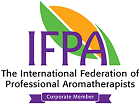Tips for the perfect aromatherapy massage
The experts at Base Formula have put together the following advice and tips to help you get the most from your aromatherapy massage.
Ensure you have the correct dilution
Add up to 4 drops of your chosen essential oil/s to 10ml of Sweet Almond Oil (or other carrier oil). Skin hydration levels make a difference as to how much oil you will need to mix but as a general rule blend 15ml for neck and shoulders and up to 60ml for a full body massage. The quantities mentioned are guidelines only – you may wish to adjust the amounts up or down to a limited degree. As long as you spot test first and avoid oils which are known to be over stimulating for sensitive skins (i.e. citrus oils) then you will be able to give an effective aromatherapy massage. If you like experimenting then always keep a note of what essential oils you have used and in what quantities. This way you will be able to identify the most effective essential oils for your treatments.
Slow down
If the massage strokes resemble car-cleaning strokes then far from promoting relaxation the recipient will feel skin irritation and heightened awareness of pain. To help you slow down put on some slow music and encourage feedback or ask the recipient to take long deep breaths in and out and then match the speed of the massage to the speed of the breaths.
Always maintain contact with the skin
Hands that are taken off the skin in between strokes again heighten the senses and awareness of pain. There is always an element of surprise as the hands once again make contact with the skin which is commonly described as "setting nerves on edge”. Contact should be maintained at all times – just slide the hands gently into position without ever losing contact – even if it means stroking across clothes or hair.
Warm hands
Warm your hands before performing a massage as being touched by cold hands causes muscles to contract and increases pain. Warm hands help to relax and soothe.
Keep hands relaxed and flat
With wrists loose bring the thumbs up into line with the rest of the hand, which should be flat but relaxed. Skin contact should be maintained throughout the whole of the hands and fingers however the most important areas are the finger tips, the fleshy pad of the hands and the heels of the hands. Loosen up the hands before starting the massage by conducting an imaginary orchestra or making waves with your hands.
Maintain good pressure – do not tickle
Stroking or tickling instead of massaging can have a hugely irritating effect. Encourage feedback so that you exert the correct degree of pressure for the recipient. Most masseurs are surprised to find that the pressure needed is considerably more than one would expect. To prevent the masseur becoming tired use your body weight where appropriate i.e. lean into the massage with a straight back. Standing to do a massage is often a lot easier because the body weight can be more easily controlled and used.
Do not apply too much massage oil
Too much oil or synthetic oils such as baby oil allow too much slippage i.e. the hands slip over the skin, which is irritating. Our advice is to use the best quality Almond Oil that you can find. This sinks into the skin "carrying” the therapeutic essential oils into the body. At the same time it still leaves a thin coat on the surface which prevents the hairs and skin being "dragged” during massage. As you massage upwards in long strokes over the muscles you should be able to see the muscle rolling ahead of you like a small wave. This shows that your pressure is such that you are helping the muscles to relax. If there is too much slippage or not enough pressure then this will not occur and you will probably find that your subject is tense and uncomfortable. If after ten minutes they are very still, lost in a trance like daze and breathing slowly and deeply then don't say a word – just carry on confident in the knowledge that you have "got the hands” as we therapists say!




